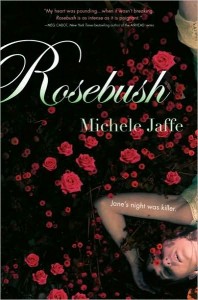 “In a curious way, I felt unburdened by the lack of hair. Something stirred in the pit of my belly and I wondered if the late Mrs Carmel Gray would like my shirt and my JKB tie and my new haircut. I wondered if I would be in the same room as the body. I wondered if I would smell the dead. Touch the dead.”
“In a curious way, I felt unburdened by the lack of hair. Something stirred in the pit of my belly and I wondered if the late Mrs Carmel Gray would like my shirt and my JKB tie and my new haircut. I wondered if I would be in the same room as the body. I wondered if I would smell the dead. Touch the dead.”
Aaron has just arrived to begin a new job. His new employer, John Barton, has already sent him to the barber, provided him with white shirts, a tie and measured him up for a suit! And Aaron has quietly accepted all this happening to him.
Strangely, the world he enters suits Aaron’s personal demeanour. He is told to watch and say nothing; so that’s what he does – he watches and observes. And he learns from John Barton, as he mimics the tasks he needs to perform at the funeral parlour, an unusual occupation for a teenage boy.
Back in his own personal world, things are less ordered and far more chaotic. He lives with Mam in a caravan park, as they have for many years, but things are changing. Often now, he has to rescue the burnt remains of Mam’s cooking, keep on the lookout for Westie and occasionally he finds himself waking in the strangest locations, pinned down by those who try to rouse him from his nightmares.
Little insights to Aaron’s past are revealed as the story progresses, but only as slowly as he cares to reveal details to the new people in his life. I love the way Mr and Mrs Barton deal with him, gently guiding and occasionally pushing him in certain directions. They are understanding adults, who avoid pressuring the somewhat troubled teen, without being too intrusive and making a subtle difference. This contrasts with those he sees at the hospital when his Mam has a broken arm. They feel she has others needs, and pressure him, but Aaron stands firm refusing further tests for her.
The Barton’s impudent and inquisitive daughter, Skye, asks many of the questions we would like to ask, and makes many wild assumptions also. Mostly, Aaron humours her, though occasionally she strikes a nerve. Piece by piece we discover more about Aaron’s life.
Scot Gardner has created another interesting world in ‘the Dead I Know’, and is able to portray the development of friendships across generations in a realistic manner. The quiet fondness of the Barton family for Aaron is accepted, though there is a slight sense of awkward reluctance from Aaron – a little reminiscent of when young Daniel begins to work for Eddy, an 89-year-old Dutch woman in ‘Burning Eddy’. (This book was on a previous CBCA shortlist in 2004)
‘The Dead I Know’ takes us into a different world, where death is all around, and the struggles of life are reduced to family memories and funeral services. Aaron fights past demons, at the same time as dealing with family concerns, and we are able to empathise with his quiet considerations of what is best to do for everyone concerned. Yet he faces his own shadows and personal doubts.





